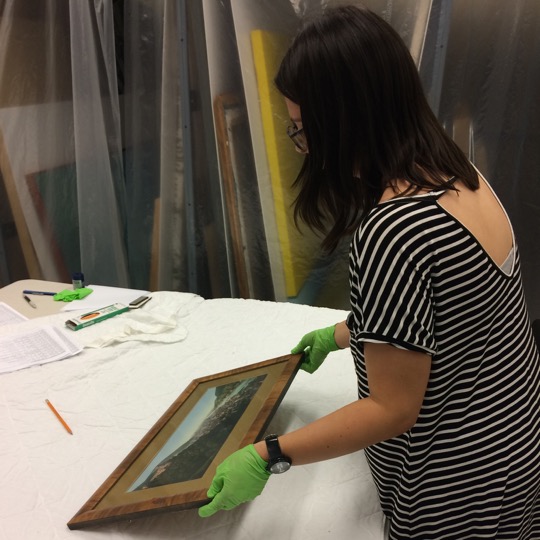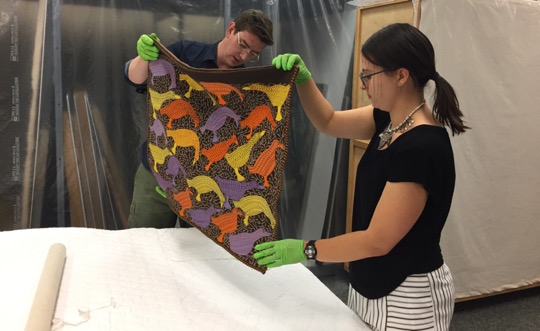UAM Summer Internship 2017: The Good, The Fair, and The Public Art-Able
Jean Middleton - 6 July 2017
One of the activities any museum intern wants to do is to have the chance to go into a collection and see everything up close. Over the past couple of weeks, I’ve been able to see a lot of the University of Alberta Art Collection that is in storage while helping with an inventory project. The purpose of this inventory was to see what works of art are suitable to potentially be used as public art, but it has also provided a chance to do condition reports and continue the University of Alberta Museums barcoding project.

During the inventory, we wanted to see which works of art were appropriate candidates for being displayed on public placement, or as coined by the Art Team – “public art-able”. To determine this, the condition of each work of art had to be reviewed. I’d been introduced to condition reporting previously, helping in the Mactaggart Art Collection but the inventory allowed me to learn much more about the process because it provided an opportunity to learn a lot about different conditions. For example, I learned how to recognize different types of damage or deterioration and the possibilities for conservation, including how to tell the difference between a stain and an accretion. An accretion is the deposit of an external material that is not part of a work itself such as residue from food, whereas a stain is a colour change on a work as a result of soiling, adhesives, pest residues, food, oils, etc. I also learned how to spot an abrasion, to look for paint loss on paintings and loose threads on textiles, and how to tell if a work is mounted on acidic matting. I’ve also learned some reasoning for accurately classifying a work of art in poor, fair, good, or excellent condition.

The most exciting part of this project is that I’ve been able to see a lot of the works of art in the University of Alberta Art Collection. Condition reporting requires close examination, so I had the opportunity to get up close to many of the works of art, including Inuit textiles, portraits of important figures from the University of Alberta’s history, a variety of works by students, and paintings by Canadian artists, including members of the Group of Seven. I was also able to use care and handling practices that I’ve learned while removing works of art from storage to put a attach new barcode label to them, and when taking reference images before putting the works back. This allowed me to see how different works of art are stored. For instance, framed works of art are stored back-to-back or front-to-front, ensuring that the frames are the points that are touching and there are no pressure points on the work of art itself. Also, works of art are separated by a material that will not affect a work of art, so it should be acid-free and chemically inert. We also inventoried some textiles which were stored rolled. I learned how to roll them, to make sure there is nothing that could cause creasing, and if there are details that could be distorted to roll them facing outwards.
While working on this inventory I was able to use a lot of the skills I’ve learned over the past couple of months, but the best part was getting to see so much of the Art Collection!